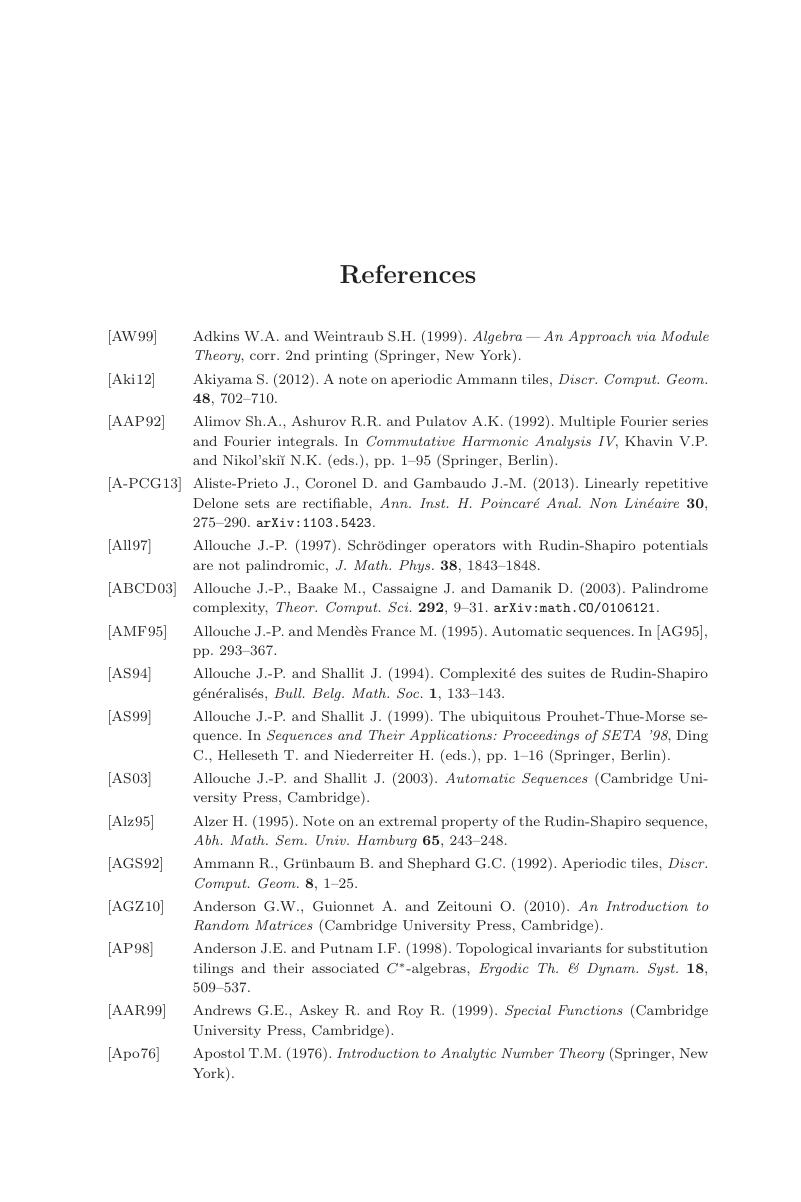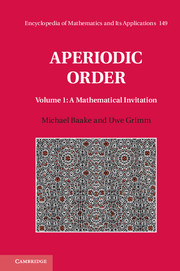Book contents
- Frontmatter
- Contents
- Foreword
- Preface
- Chapter 1 Introduction
- Chapter 2 Preliminaries
- Chapter 3 Lattices and Crystals
- Chapter 4 Symbolic Substitutions and Inflations
- Chapter 5 Patterns and Tilings
- Chapter 6 Inflation Tilings
- Chapter 7 Projection Method and Model Sets
- Chapter 8 Fourier Analysis and Measures
- Chapter 9 Diffraction
- Chapter 10 Beyond Model Sets
- Chapter 11 Random Structures
- Appendix A The Icosahedral Group
- Appendix B The Dynamical Spectrum
- References
- List of Examples
- List of Remarks
- Index
- References
References
Published online by Cambridge University Press: 18 December 2014
- Frontmatter
- Contents
- Foreword
- Preface
- Chapter 1 Introduction
- Chapter 2 Preliminaries
- Chapter 3 Lattices and Crystals
- Chapter 4 Symbolic Substitutions and Inflations
- Chapter 5 Patterns and Tilings
- Chapter 6 Inflation Tilings
- Chapter 7 Projection Method and Model Sets
- Chapter 8 Fourier Analysis and Measures
- Chapter 9 Diffraction
- Chapter 10 Beyond Model Sets
- Chapter 11 Random Structures
- Appendix A The Icosahedral Group
- Appendix B The Dynamical Spectrum
- References
- List of Examples
- List of Remarks
- Index
- References
Summary

- Type
- Chapter
- Information
- Aperiodic Order , pp. 489 - 516Publisher: Cambridge University PressPrint publication year: 2013



